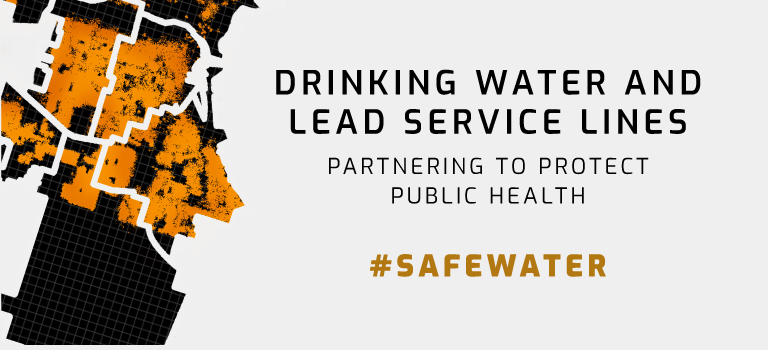Drinking Water and Lead Service Lines: Partnering to Protect Public Health

In 2014, the city of Flint, Michigan, made a decision that would have massive and irreversible effects on its residents: It changed its water supply.
In an effort to decrease dependency on Detroit’s water supply, city officials planned to construct a pipeline that would bring water to Flint from Lake Huron. In the meantime, the city decided to use the Flint River as its water supply, which was once the primary source of water for the area.
But residents were skeptical.
“Even with a proven track record of providing perfectly good water for Flint, there still remains lingering uncertainty [from the public] about the quality of the water,” stated a press release from the mayor’s office. However, the city assured its residents that the river water was safe to drink.
A few months after switching to the Flint River supply in April 2014, residents began to complain about the deteriorating color, smell and quality of their water. A 2015 test conducted by the city revealed high lead content in the water of a Flint resident’s home. Other studies began to show elevated levels of lead in the water supply, as well as in Flint’s children.
Flint was in the midst of a water crisis.
In October 2015, after more than a year of concern about the quality of the Flint River’s water, the city switched their water source back to Detroit’s supply. In early 2016, both Michigan Gov. Rick Synder and President Barack Obama declared a state of emergency for the area due to poor water quality.
While Flint’s water crisis is no longer dominating national headlines, residents still rely on filtered or bottled water for drinking, bathing and cooking.
And Flint isn’t the only city where the health of residents is in danger of lead. Exposure to this neurotoxin contributes to cognitive impairment, behavioral problems and lowered IQ. There is no safe level of lead exposure. Yet, lead can be found in dust in our homes, air, soil and drinking water.
Lead service lines are the largest source of lead in drinking water — with up to 10 million lead service lines bringing water to taps across the United States. Following the tragedy in Flint, a diverse group of 25 national organizations formed the Lead Service Line Replacement Collaborative, organized around the goal of accelerating full lead service line replacement in communities across the nation.
Where do we begin in safeguarding the water of communities across the U.S.?
Join us for a discussion focused on lead service line replacement within the broader context of tackling all sources of lead. The event will address the health risk of lead service lines, the role of public health professionals in the replacement process, and the importance of effective partnerships between public health agencies and water utilities to develop and implement creative solutions. We will provide public health professionals with practical tools to tackle the problem in their own community. Join us in person or online.
Agenda
Welcoming remarks
Lynn R. Goldman, MD, MS, MPH, Dean of the Milken Institute School of Public Health, George Washington University
Personal story
Yaquelin Vargas from Flint, Michigan, will tell the story of how her family was affected by lead poisoning.
Panel presentations
Speakers will share short case studies on how Cincinnati, Ohio, and Milwaukee, Wisconsin, are tackling lead service line replacement. The case studies will emphasize the importance of effective partnerships between public health agencies and water utilities, and will provide examples of how to overcome practical barriers to address the problem.
- Cathy Bailey, Executive Director, Greater Cincinnati Water Works
- Cynthia McCarthy, HUD Program Manager, Cincinnati Health Department
- Jean Shultz, Environmental and Disease Control Specialist, Milwaukee Department of Public Health
The event will be moderated by the National Center for Healthy Housing Executive Director Amanda Reddy.
Organizers and Sponsors
Citation for this content: MPH@GW, the online MPH program from the Milken Institute School of Public Health at the George Washington University


